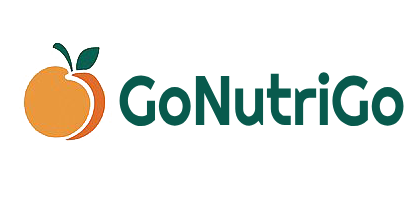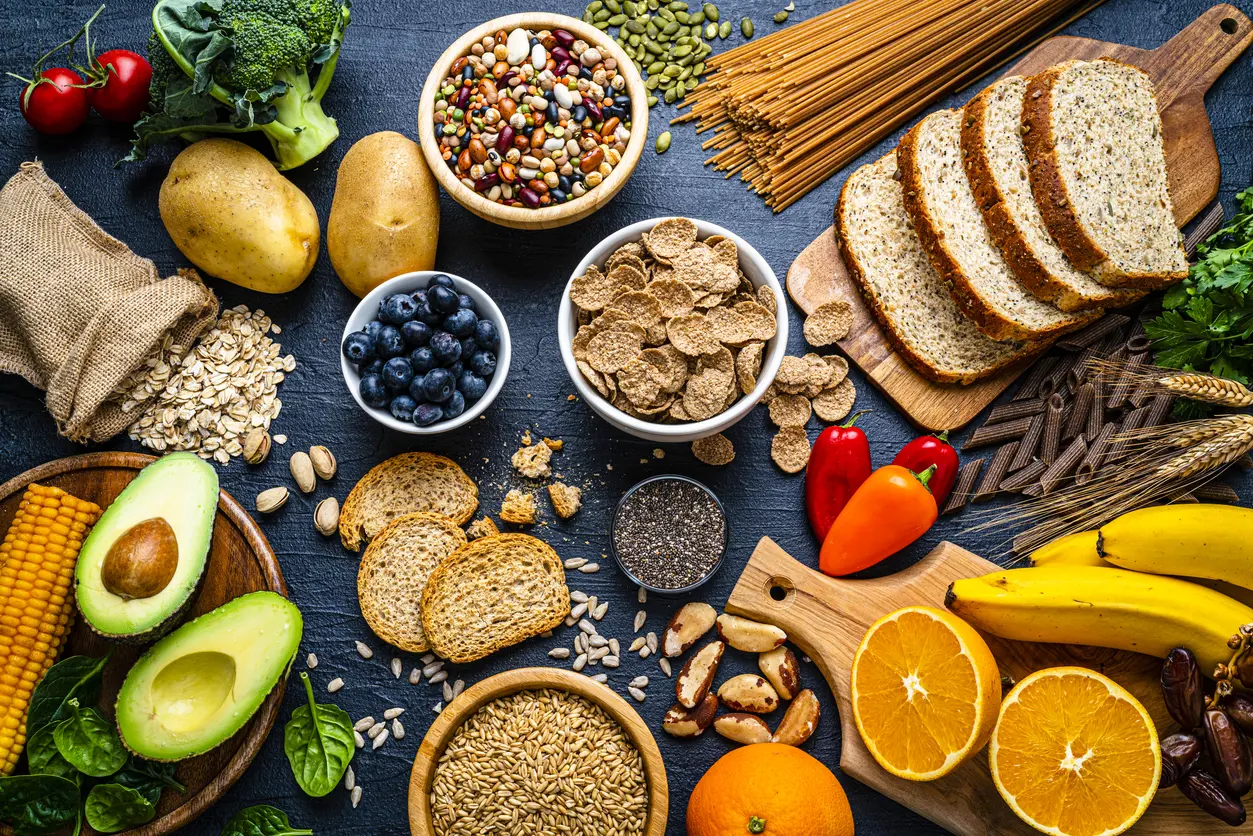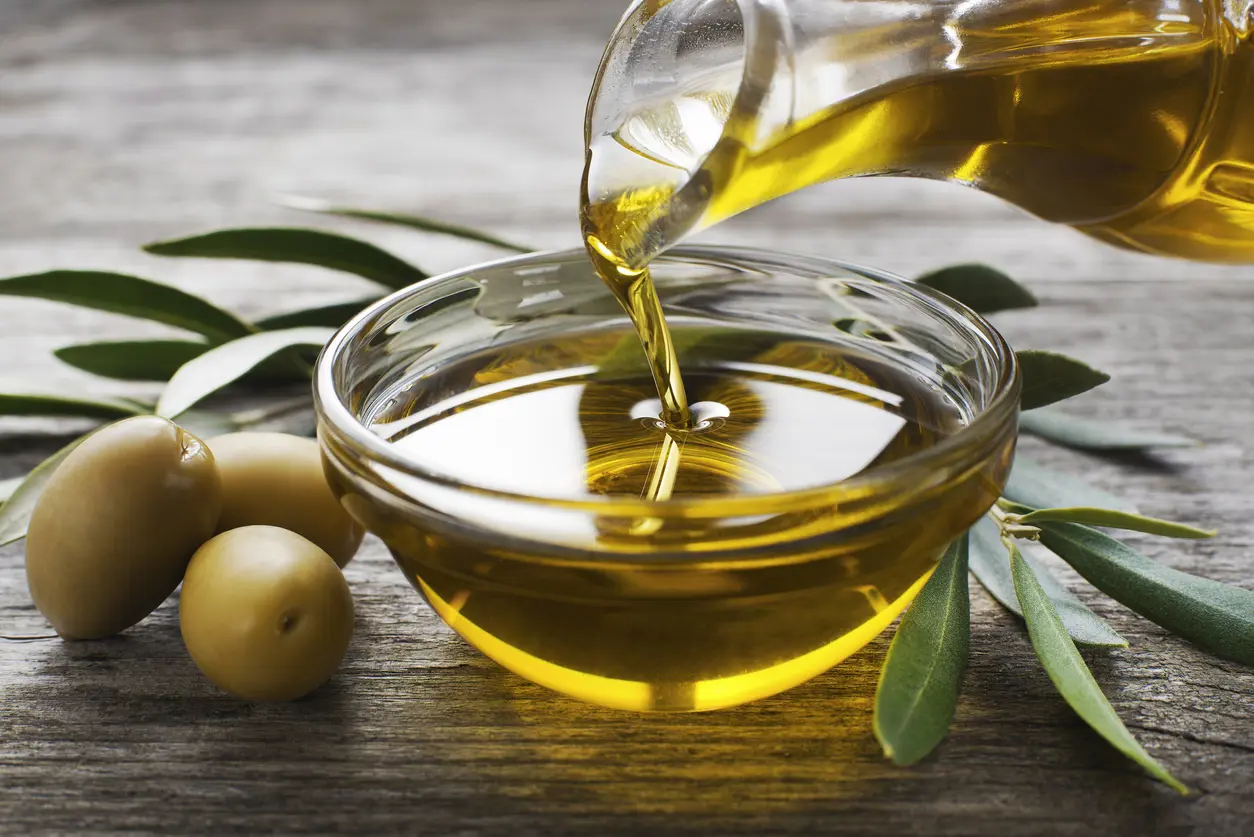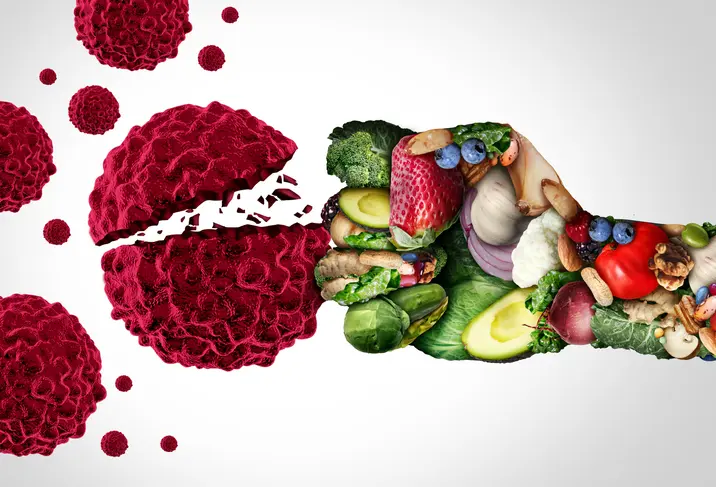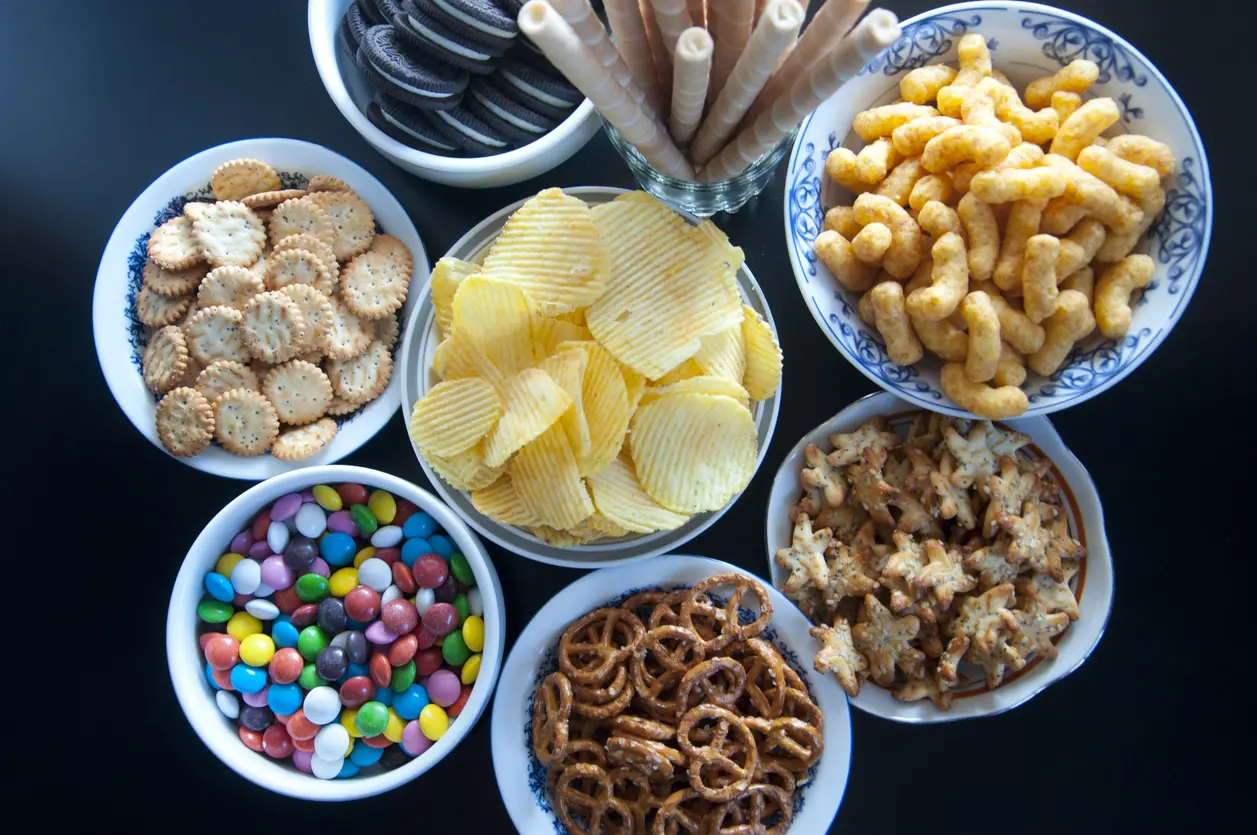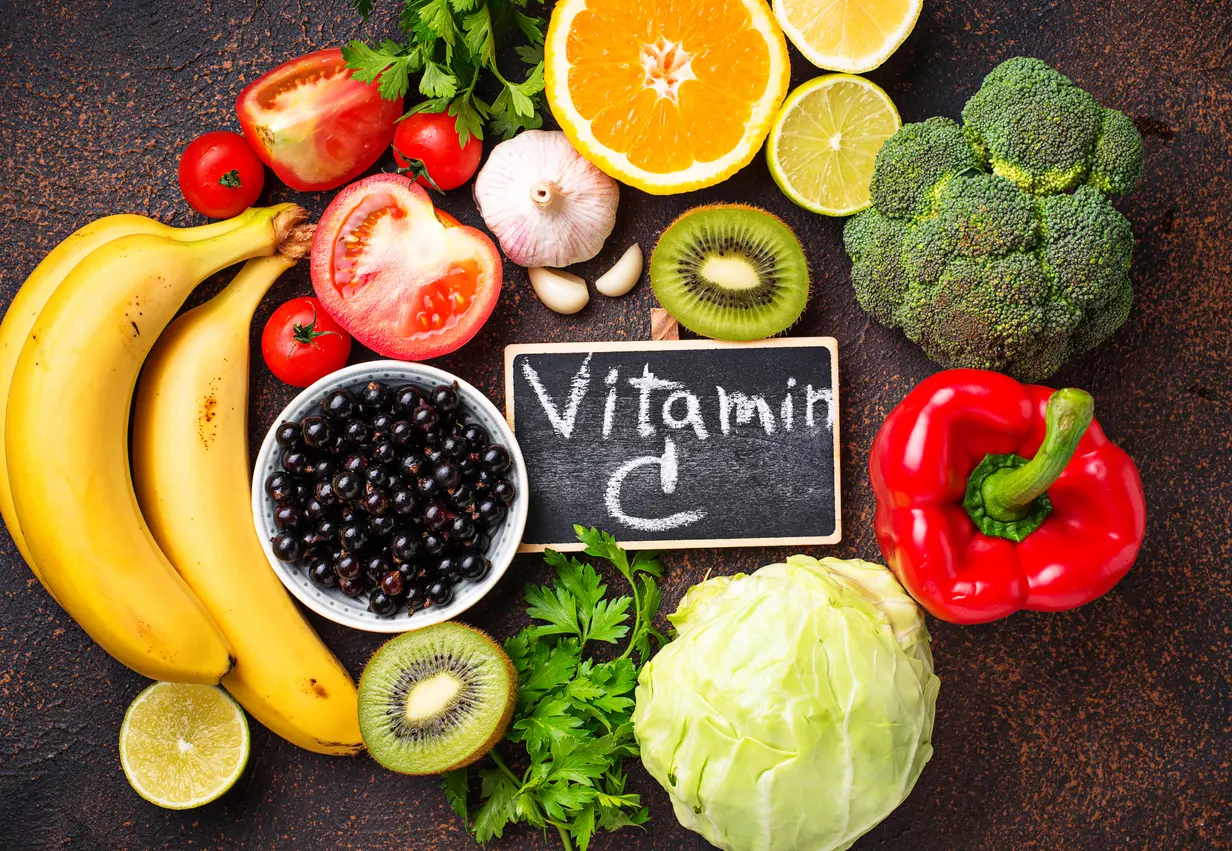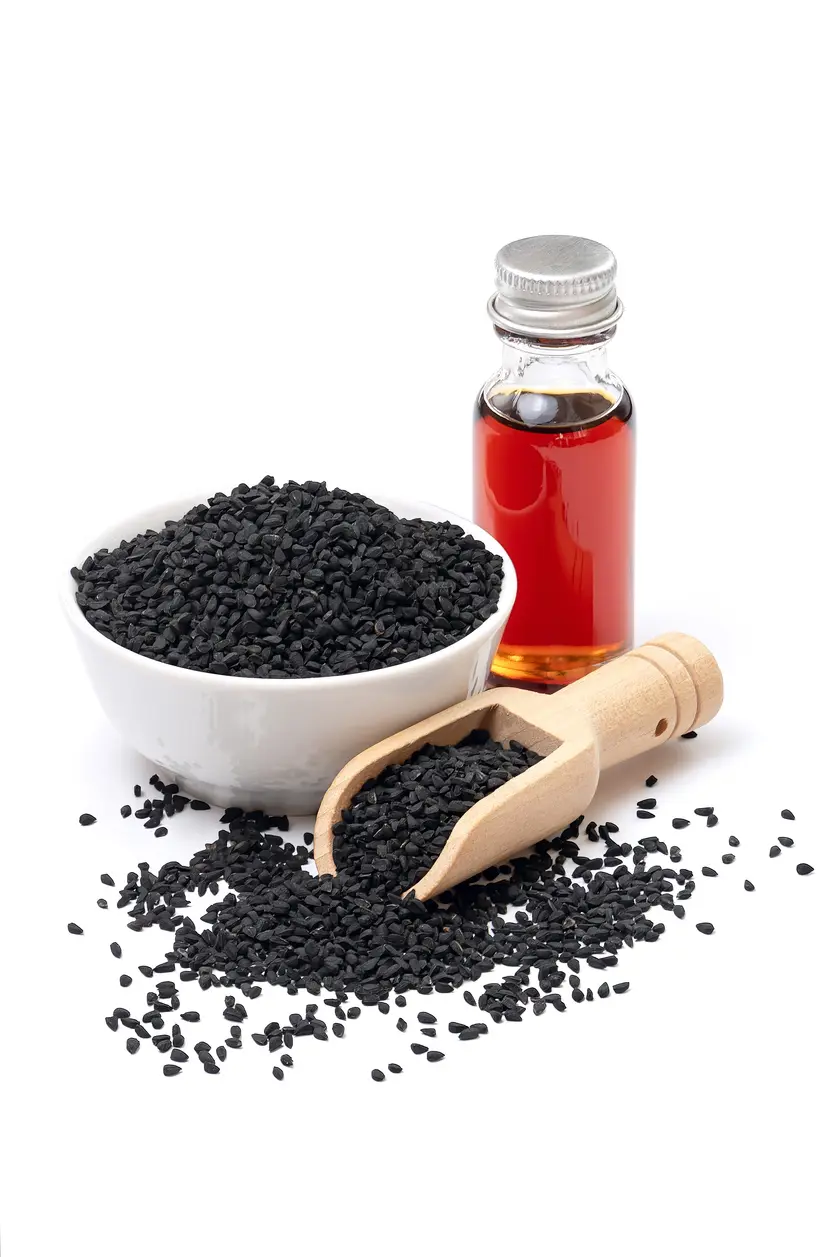20 Healthy Foods for Your Weight Loss Journey

Weight loss can sometimes feel like a maze. One day it's low-carb, the next day it's intermittent fasting. With all the conflicting advice, no wonder we’re all perplexed about what is healthy and what’s not. Yet, successful weight loss needn't involve cutting out whole foods or perpetual hunger.
Some foods can aid in weight loss because they influence our metabolism, hunger hormones, and energy requirements. They have fewer calories but are rich in nutrients, fiber, or protein, and satisfying enough to prevent overeating. They are also thermogenic, so your body uses up additional calories simply digesting them. Even better, they're readily available, simple to add, and won't require you to alter your existing eating habits entirely.
Here in this article are 20 of the best weight-loss foods, backed by science, not trends. They're simple, nutritious, and can keep you in shape and maintain weight for the long haul.
1. Eggs
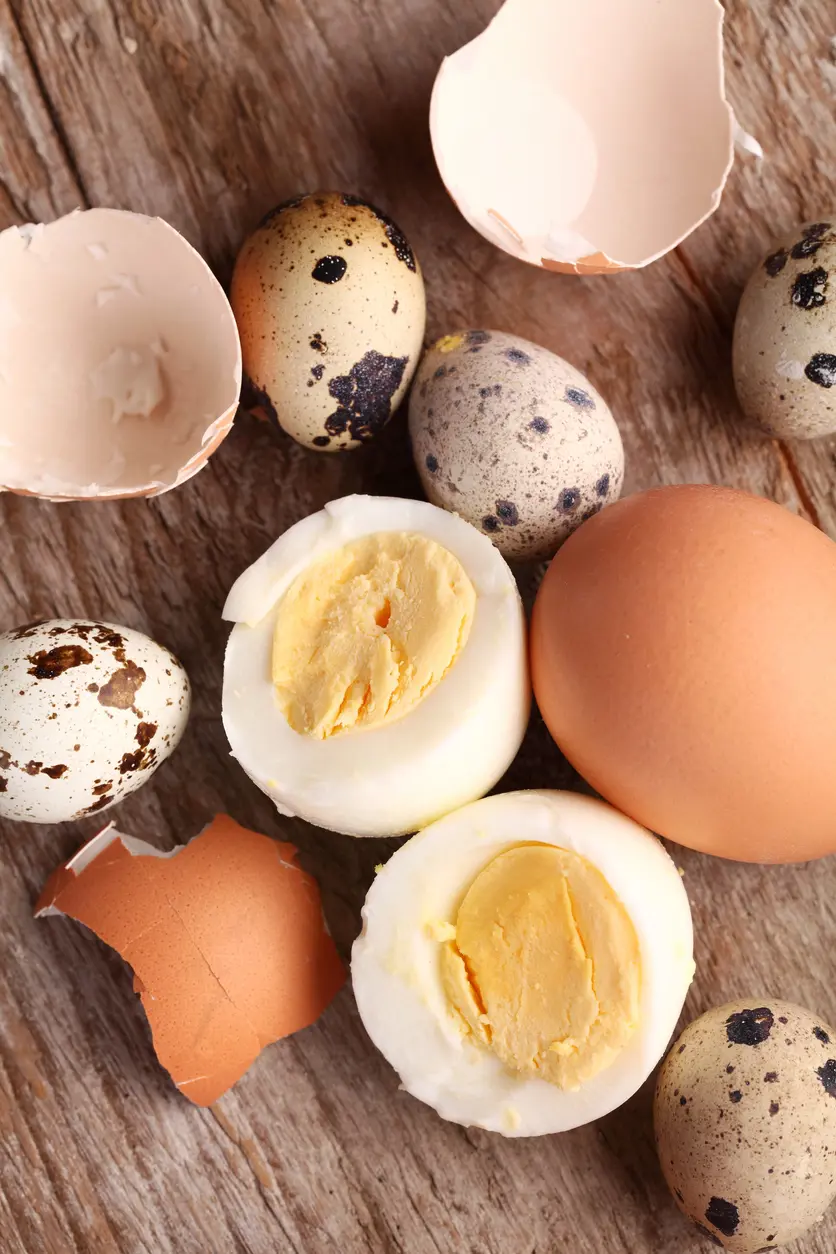
Eggs are a simple source of high-quality protein and nutrients like choline and vitamin D. Their protein and fat improve satiety. One study found that individuals who consumed eggs for breakfast consumed fewer calories in the next 36 hours compared to individuals who had a high-carbohydrate breakfast. [1] Jillon S Vander Wal, Jorene M Marth, Pramod Khosla, K-L Catherine Jen, Nikhil V Dhurandhar Short-term effect of eggs on satiety in overweight and obese subjects. 2005
How to enjoy them:
For easy meal prep, boil for a quick snack, scramble with veggies, or bake into a breakfast casserole.
2. Leafy Greens
Leafy greens such as spinach, kale, and collard greens are low in calories but high in water and fiber content. They add color and bulk to meals without adding many calories. The fiber slows down digestion, causing feelings of fullness. A review article in Nutrients highlights the contribution of low-energy-dense foods such as leafy greens to weight management. [2] Mark L Dreher, Nikki A Ford A comprehensive critical assessment of increased fruit and vegetable intake and weight management. 2020
How to enjoy them:
Blend into smoothies, toss into a salad, layer in sandwiches, or sauté with any protein or grain in a pot.
3. Salmon
Salmon is a great protein and omega-3 fatty acids source, which aids in weight control and long-term health. Protein helps to keep you satisfied and maintain or add muscle mass, while omega-3s can aid in your body's fat burning and inflammation reduction. In 2019, a review determined that seafood ameliorated obesity, insulin, and T2DM indicators. [3] Bjørn Liaset, Jannike Øyen, Hélène Jacques, Karsten Kristiansen, Lise Madsen Seafood intake and the development of obesity, insulin resistance and type 2 diabetes 2019
How to enjoy it:
Grill, bake, or pan-sear with herbs, or flake into grain bowls, salads, or lettuce wraps.
4. Cruciferous Vegetables

Broccoli, cauliflower, Brussels sprouts, and cabbage are low-calorie, high-fiber vegetables with a moderate amount of protein that increases satiety. A study in PLOS Medicine linked higher consumption of cruciferous vegetables with weight loss over a four-year period. [4] Monica L Bertoia, Kenneth J Mukamal, Leah E Cahill, Tao Hou, David S Ludwig, Dariush Mozaffarian, Walter C Willett, Frank B Hu, Eric B Rimm Changes in intake of fruits and vegetables and weight change in United States men and women followed for up to 24 years: analysis from three prospective cohort studies. 2015
How to enjoy them:
Roast with olive oil, steam and toss with lemon juice, or shred into salads and slaws.
5. Chicken Breast
Lean chicken breast is one of the best animal protein sources for weight management because it has very little fat and helps you feel full and maintain muscle even while eating fewer calories. Protein also burns more calories when your body processes it. A study in Nutrition & Metabolism supports protein’s role in reducing appetite and calorie intake. [5] Dominik H Pesta, Varman T Samuel A high-protein diet for reducing body fat: mechanisms and possible caveats. 2014
How to enjoy it:
Grill, bake, or stir-fry and use in salads, tacos, or rice bowls for a satisfying main dish.
6. Boiled Potatoes
Boiled potatoes are not typically part of weight loss diets, yet they are perhaps the most satisfying food you can consume to go along with a lower calorie diet. They are dense in water and fiber, and a special kind of starch known as resistant starch that keeps you full for hours. Research shows that boiled potatoes rank very high on a satiety index, which measures how satisfying foods are.[6] Sabina S H Andersen, Jonas M F Heller, Thea Toft Hansen, Anne Raben Comparison of low glycaemic index and high glycaemic index potatoes in relation to satiety: a single-blinded, randomised crossover study in humans. 2018
How to enjoy them:
Serve with herbs and olive oil, slice into a salad, or chill and use in a potato salad to increase resistant starch content.
7. Beans and Legumes
Legumes such as lentils, beans, and chickpeas are among the finest plant-based sources of protein and fiber. Both protein and fiber can lead to improved satiety and level blood sugar, two requirements for weight loss. In a 2023 study in Nutrients, it was discovered that legume intake was linked with lower body weight and body fat after 10 years. [7] Larry A Tucker Legume intake, body weight, and abdominal adiposity: 10-year weight change and cross-sectional results in 15,185 U.S. adults. 2023
How to enjoy them:
Throw on salads, blend into soups, add to chili, or roast chickpeas for a snack.
8. Cottage Cheese
Cottage cheese is low in calories but high in protein and calcium, which helps lose weight. Protein discourages hunger and preserves muscle. High-protein dairy enhances satiety and diet quality in a 2025 study. [8] Dominic N. Farsi, Harsh Mathur, Tom Beresford, Paul D. Cotter Cottage cheese, a relatively underexplored cultured dairy product with potential health benefits? 2025
How to enjoy it:
Serve it with berries and granola, dip veggies into it, or mix it into scrambled eggs for extra creaminess.
9. Avocados
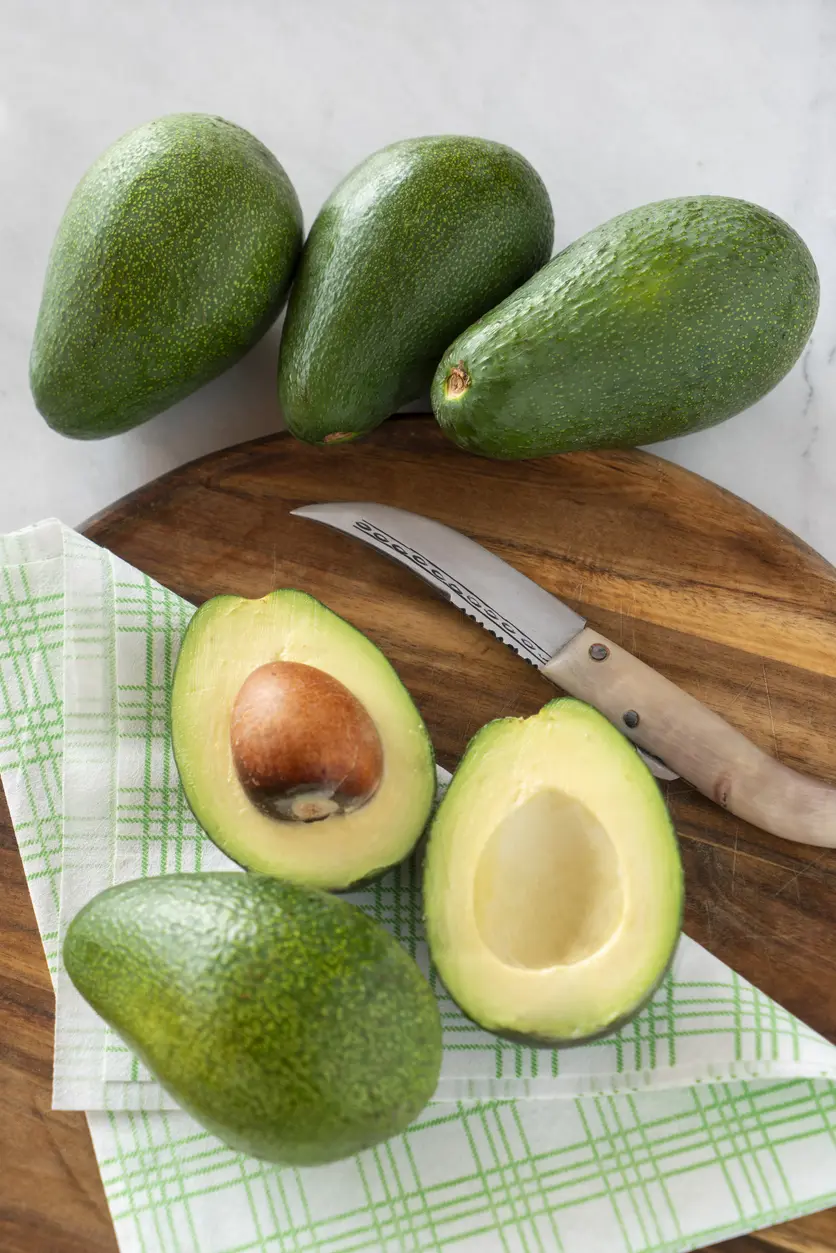
Although more calorie-dense than other ingredients on this list, avocados are a source of heart-healthy monounsaturated fat and fiber, both of which help with fullness and satisfaction. Just make sure to enjoy them in moderation (one serving is about ¼ of an avocado). Research from a 2019 study showed that avocados facilitated weight loss when part of a hypocaloric diet.[9] Susanne M Henning, Jieping Yang, Shih Lung Woo, Ru-Po Lee, Jianjun Huang, Anna Rasmusen, Catherine L Carpenter, Gail Thames, Irene Gilbuena, Chi-Hong Tseng, David Heber, Zhaoping Li Hass Avocado Inclusion in a Weight-Loss Diet Supported Weight Loss and Altered Gut Microbiota: A 12-Week Randomized, Parallel-Controlled Trial 2019
How to enjoy them:
Spread on whole-grain bread, blended with smoothies, or chopped and tossed into salads and grain bowls.
10. Whole Grains
Grains like oats, quinoa, brown rice, and whole wheat products are rich in complex carbohydrates, fiber, and many different vitamins and minerals. Because they are high in fiber, they take longer to digest than refined grains found in white bread and pastries. This extra complexity helps with satiety and blood sugar management. Research from The American Journal of Clinical Nutrition showed that whole grain replacement for refined grains supplemented calorie loss with increased metabolic rate and energy excretion via stool. [10] J Philip Karl, Mohsen Meydani, Junaidah B Barnett, Sally M Vanegas, Barry Goldin, Anne Kane, Helen Rasmussen, Edward Saltzman, Pajau Vangay, Dan Knights, C-Y Oliver Chen, Sai Krupa Das, Satya S Jonnalagadda, Simin N Meydani, Susan B Roberts Substituting whole grains for refined grains in a 6-wk randomized trial favorably affects energy-balance metrics in healthy men and postmenopausal women. 2017
How to enjoy them:
Try an overnight oats recipe for breakfast, toss some quinoa into salads, or use some rice or whole wheat pasta as a side with lean protein.
11. Nuts
Almonds, pistachios, and walnuts are high in calories but are filled with healthy fat, protein, and fiber. These nutrients enhance satiety, which may lower overall food intake. Although nuts have fat, studies suggest that they may aid in fat loss when consumed in limited amounts. A paper in Nutrients recognizes their pivotal role in successful weight control. [11] David J Baer, Michelle Dalton, John Blundell, Graham Finlayson, Frank B Hu Nuts, Energy Balance and Body Weight. 2023
How to enjoy them:
Snack on a small handful, sprinkle over salads, or stir into oatmeal or parfaits.
12. Chia Seeds
Chia seeds are tiny but effective in losing weight. They have fiber, mostly soluble fiber, which expands when it takes up water and sits in your stomach to make you feel fuller longer. Two tablespoons yield nearly 10 grams of fiber. A meta-analysis published in Nutrition & Metabolism concluded that supplementation with chia seeds reduced appetite and food intake among obese individuals. [12] Mehdi Karimi, Samira Pirzad, Niyousha Shirsalimi, Sajad Ahmadizad, Seyyed Mohammad Hashemi, Shaghayegh Karami, Kimia Kazemi, Erfan Shahir-Roudi, Anita Aminzadeh Effects of chia seed (Salvia hispanica L.) supplementation on cardiometabolic health in overweight subjects: a systematic review and meta-analysis of RCTs. 2024
How to enjoy them:
Stir into yogurt or smoothies, make chia pudding, or mix into baked goods or oatmeal for a fiber boost.
13. Berries
Berries such as strawberries, blueberries, and raspberries are low in calories but high in fiber and antioxidants. They are sweet enough to replace more calorie-dense desserts, and their fiber digests slowly and stifles hunger. One study in Appetite found that berry snacking stifled hunger and calorie intake at the next meal. [13] Lewis J. James , Mark P. Funnell , Samantha Milner An afternoon snack of berries reduces subsequent energy intake compared to an isoenergetic confectionary snack. 2015
How to enjoy them:
Toss berries into smoothies, yogurt, salads, or enjoy frozen as a cool snack.
14. Greek Yogurt
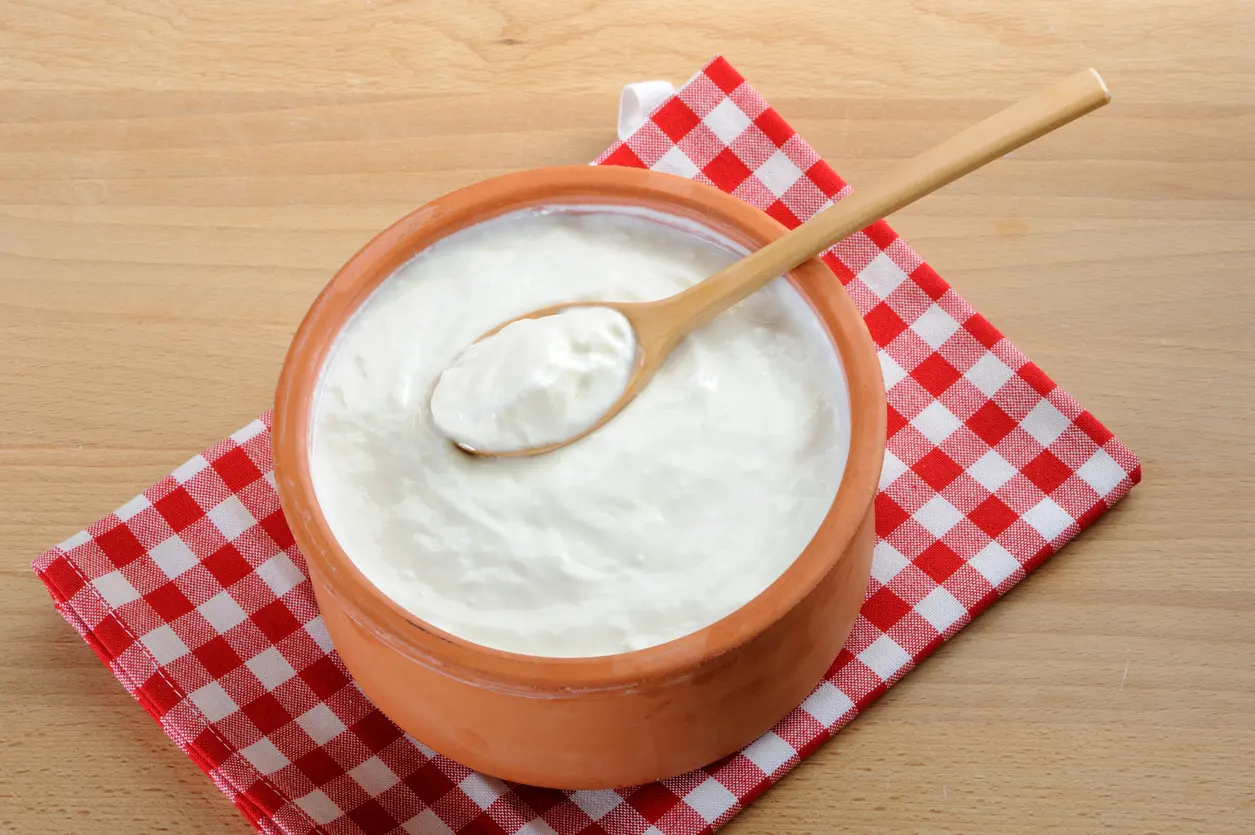
Greek yogurt is denser, creamier, and higher in protein than regular yogurt. It stabilizes blood sugar and makes individuals feel fuller and possibly suppresses snacking. High-protein foods like dairy Greek yogurt, based on a 2023 review, will help with fat loss while sparing muscles. [14] Koichiro Sumi, Ryoichi Tagawa, Kae Yamazaki, Kyosuke Nakayama, Takefumi Ichimura, Chiaki Sanbongi, Koichi Nakazato Nutritional Value of Yogurt as a Protein Source: Digestibility/Absorbability and Effects on Skeletal Muscle. 2023
How to enjoy it:
Eat plain or with berries, use in smoothies or dips, or swap it for sour cream in savory dishes.
15. Apples
Apples are made mainly of water and fiber, including pectin, which aids digestion and blood sugar control. Whole apples are crunchy and slow to eat, resulting in satiety more than juice or sauce. Apple eating is linked to weight loss in a 2019 review. [15] Sedigheh Asgary, Ali Rastqar, Mahtab Keshvari Weight Loss Associated With Consumption of Apples: A Review. 2018
How to enjoy them:
Slice and pair with nut butter, dice into oatmeal, or eat whole as a naturally portable snack.
16. Green Tea
Green tea contains antioxidants called catechins, which can contribute to fat burning and enhance metabolic response. Green tea contains caffeine, which may potentially boost energy expenditure and fat oxidation. A 2021 article supports catechin’s affect on fat burning, particularly when exercising. [16] Hadi Nobari, Saber Saedmocheshi, Linda H Chung, Katsuhiko Suzuki, Marcos Maynar-Mariño, Jorge Pérez-Gómez An Overview on How Exercise with Green Tea Consumption Can Prevent the Production of Reactive Oxygen Species and Improve Sports Performance. 2021
How to enjoy it:
Drink it hot or cold in the morning for a caffeine kick, or blend with lemon or mint for various flavors.
17. Chili Peppers
Chili peppers are usually turned to for weight loss due to capsaicin, an ingredient that possesses the ability to boost metabolism, increase fat oxidation, and suppress appetite Epidemiological data has shown consumption of foods with capsaicin is associated with a lower risk of obesity. [17]
How to enjoy them:
- Add fresh or dried chili to stir-fries, soups, marinades, or sprinkle red pepper flakes over eggs and roasted vegetables.
18. Broth-Based Soups
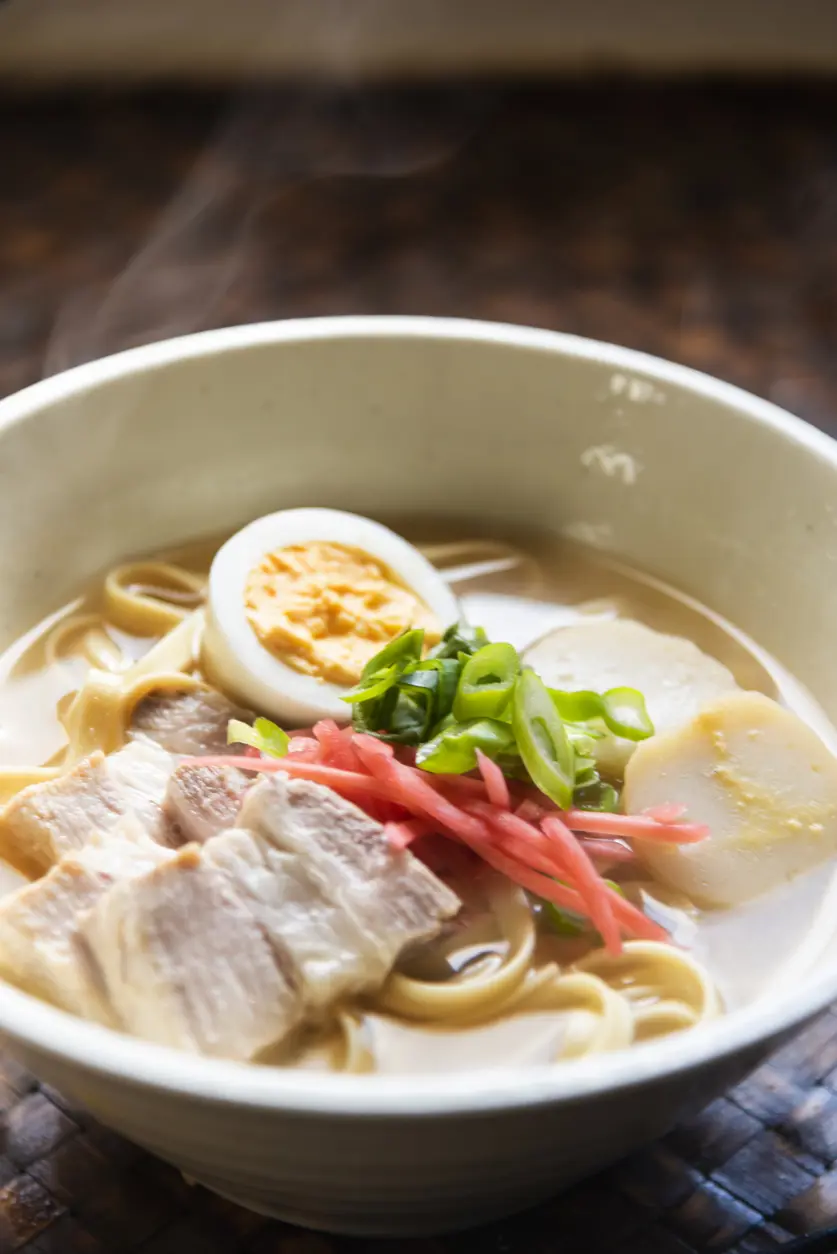
Broth-based soups have the ability to cut down on calories by creating premature fullness. They contain very few calories but are relatively high in volume, which means you get filled up without really adding much to your count. One study in Appetite showed that people who ate soup first before the meal actually took in 20 percent less total calories.[18] Julie E Flood, Barbara J Rolls Soup preloads in a variety of forms reduce meal energy intake. 2007
How to enjoy them:
Make a vegetable or chicken soup from leftover veggies or chicken bones, add herbs and legumes, or sip on a light miso broth before meals.
19. Watermelon
Though sweet, watermelon is mainly made of water (not surprising from its name) and is very low in calories. These components make it a great refreshing and hydrating option for weight loss. Its bulk and fiber increase satiety, satisfying a craving for something sweet and juicy. In a Nutrients study, watermelon consumption increased satiety and reduced body weight after four weeks. [19] Tiffany Lum, Megan Connolly, Amanda Marx, Joshua Beidler, Shirin Hooshmand, Mark Kern, Changqi Liu, Mee Young Hong Effects of Fresh Watermelon Consumption on the Acute Satiety Response and Cardiometabolic Risk Factors in Overweight and Obese Adults. 2019
How to enjoy it:
Dice up a watermelon to keep in the fridge for snacks, to blend into smoothies, or add to salads with feta and mint.
20. Dark Chocolate
Dark chocolate is a great way to satisfy your sweet tooth while still supporting your weight loss goals. It contains antioxidants and healthy fats that curb appetite and increase fullness. In a 2017 study, scientists found that people who ate small pieces of dark chocolate every day consumed less food compared to those who ate milk or white chocolate. [20] Channa E Marsh, Daniel J Green, Louise H Naylor, Kym J Guelfi Consumption of dark chocolate attenuates subsequent food intake compared with milk and white chocolate in postmenopausal women. 2017
How to enjoy it:
Choose 70 percent cocoa or higher, and enjoy a square or two with fruit or after meals as a mindful indulgence.
Conclusion
Weight loss is not one-size-fits-all, but the right foods can make it easier and more effective. The most effective foods for weight loss emphasize nourishment and long-term health over deprivation.
These 20 calorie-stacking foods boost metabolism, suppress appetite, and provide essential nutrients without extra calories. However, there is no magic bullet when it comes to food. Lasting weight loss comes from habit consistency, good nutrition, and self-care.
Focus on making small changes instead of trying to alter everything all at once. Add one or two of these foods to your meals. Make meals that are nourishing and give you energy. Gradually, these little changes can build up.
Incorporating These Foods into Your Diet for Weight Loss
- Try meal planning. Planning and prepping ahead reduces the chances of convenience foods being chosen.
- Pair protein and fiber to prolong the sensation of fullness.
- Practice portion control; even nutritious foods can increase weight gain if consumed excessively.
- Avoid processed foods that contain added sugars, oils, or sodium.
- Maintain hydration when boosting fiber consumption. Water supports digestion and encourages satiety.
Foods to limit while losing weight:
There are no foods that are completely forbidden, although certain foods need to be taken in limited quantities to lose weight. There are some that should be consumed only in moderation for weight loss:
- Sugary drinks include soda, sweet tea, and flavored coffee.
- Ultra-processed food includes processed desserts, pastries, and chips.
- Processed carbohydrates like white bread, crackers, and sugary cereals.
- Alcohol, especially in excess, adds empty calories and disrupts appetite regulation
Prioritizing whole foods that nourish you can encourage weight loss and health. Start with what you enjoy, stick with it, and develop healthy habits to support your health goals.
Was this article helpful?
-
Short-term effect of eggs on satiety in overweight and obese subjects.; Jillon S Vander Wal, Jorene M Marth, Pramod Khosla, K-L Catherine Jen, Nikhil V Dhurandhar; ( 2005 )
https://pubmed.ncbi.nlm.nih.gov/16373948/ -
A comprehensive critical assessment of increased fruit and vegetable intake and weight management.; Mark L Dreher, Nikki A Ford; ( 2020 )
https://pmc.ncbi.nlm.nih.gov/articles/PMC7399879/ -
Seafood intake and the development of obesity, insulin resistance and type 2 diabetes; Bjørn Liaset, Jannike Øyen, Hélène Jacques, Karsten Kristiansen, Lise Madsen; ( 2019 )
https://pmc.ncbi.nlm.nih.gov/articles/PMC6536831/#:~:text=At%20equal%20energy%20intake%2C%20lean,effects%20from%20intake%20of%20seafood. -
Changes in intake of fruits and vegetables and weight change in United States men and women followed for up to 24 years: analysis from three prospective cohort studies.; Monica L Bertoia, Kenneth J Mukamal, Leah E Cahill, Tao Hou, David S Ludwig, Dariush Mozaffarian, Walter C Willett, Frank B Hu, Eric B Rimm; ( 2015 )
https://pmc.ncbi.nlm.nih.gov/articles/PMC4578962/ -
A high-protein diet for reducing body fat: mechanisms and possible caveats.; Dominik H Pesta, Varman T Samuel; ( 2014 )
https://pmc.ncbi.nlm.nih.gov/articles/PMC4258944/ -
Comparison of low glycaemic index and high glycaemic index potatoes in relation to satiety: a single-blinded, randomised crossover study in humans.; Sabina S H Andersen, Jonas M F Heller, Thea Toft Hansen, Anne Raben; ( 2018 )
https://pmc.ncbi.nlm.nih.gov/articles/PMC6266898/ -
Legume intake, body weight, and abdominal adiposity: 10-year weight change and cross-sectional results in 15,185 U.S. adults.; Larry A Tucker; ( 2023 )
https://pmc.ncbi.nlm.nih.gov/articles/PMC9864712/ -
Cottage cheese, a relatively underexplored cultured dairy product with potential health benefits?; Dominic N. Farsi, Harsh Mathur, Tom Beresford, Paul D. Cotter; ( 2025 )
https://www.tandfonline.com/doi/full/10.1080/10408398.2025.2487682 -
Hass Avocado Inclusion in a Weight-Loss Diet Supported Weight Loss and Altered Gut Microbiota: A 12-Week Randomized, Parallel-Controlled Trial; Susanne M Henning, Jieping Yang, Shih Lung Woo, Ru-Po Lee, Jianjun Huang, Anna Rasmusen, Catherine L Carpenter, Gail Thames, Irene Gilbuena, Chi-Hong Tseng, David Heber, Zhaoping Li; ( 2019 )
https://pmc.ncbi.nlm.nih.gov/articles/PMC6658913/ -
Substituting whole grains for refined grains in a 6-wk randomized trial favorably affects energy-balance metrics in healthy men and postmenopausal women.; J Philip Karl, Mohsen Meydani, Junaidah B Barnett, Sally M Vanegas, Barry Goldin, Anne Kane, Helen Rasmussen, Edward Saltzman, Pajau Vangay, Dan Knights, C-Y Oliver Chen, Sai Krupa Das, Satya S Jonnalagadda, Simin N Meydani, Susan B Roberts; ( 2017 )
https://pubmed.ncbi.nlm.nih.gov/28179223/ -
Nuts, Energy Balance and Body Weight.; David J Baer, Michelle Dalton, John Blundell, Graham Finlayson, Frank B Hu; ( 2023 )
https://pmc.ncbi.nlm.nih.gov/articles/PMC10004756/ -
Effects of chia seed (Salvia hispanica L.) supplementation on cardiometabolic health in overweight subjects: a systematic review and meta-analysis of RCTs.; Mehdi Karimi, Samira Pirzad, Niyousha Shirsalimi, Sajad Ahmadizad, Seyyed Mohammad Hashemi, Shaghayegh Karami, Kimia Kazemi, Erfan Shahir-Roudi, Anita Aminzadeh; ( 2024 )
https://pmc.ncbi.nlm.nih.gov/articles/PMC11406937/ -
An afternoon snack of berries reduces subsequent energy intake compared to an isoenergetic confectionary snack.; Lewis J. James , Mark P. Funnell , Samantha Milner; ( 2015 )
https://www.sciencedirect.com/science/article/abs/pii/S0195666315003220 -
Nutritional Value of Yogurt as a Protein Source: Digestibility/Absorbability and Effects on Skeletal Muscle.; Koichiro Sumi, Ryoichi Tagawa, Kae Yamazaki, Kyosuke Nakayama, Takefumi Ichimura, Chiaki Sanbongi, Koichi Nakazato; ( 2023 )
https://pmc.ncbi.nlm.nih.gov/articles/PMC10609537/#:~:text=Body%20weight%20and%20body%20fat,skeletal%20muscle%20during%20weight%20loss. -
Weight Loss Associated With Consumption of Apples: A Review.; Sedigheh Asgary, Ali Rastqar, Mahtab Keshvari; ( 2018 )
https://pubmed.ncbi.nlm.nih.gov/29630462/ -
An Overview on How Exercise with Green Tea Consumption Can Prevent the Production of Reactive Oxygen Species and Improve Sports Performance.; Hadi Nobari, Saber Saedmocheshi, Linda H Chung, Katsuhiko Suzuki, Marcos Maynar-Mariño, Jorge Pérez-Gómez; ( 2021 )
https://pmc.ncbi.nlm.nih.gov/articles/PMC8750450/ -
Chili pepper preference development and its impact on dietary intake: A narrative review,; Emily Siebert, Soo-Yeun Lee, Melissa Pflugh Prescott; ( 2022 )
https://www.frontiersin.org/journals/nutrition/articles/10.3389/fnut.2022.1039207/full -
Soup preloads in a variety of forms reduce meal energy intake.; Julie E Flood, Barbara J Rolls; ( 2007 )
https://pmc.ncbi.nlm.nih.gov/articles/PMC2128765/ -
Effects of Fresh Watermelon Consumption on the Acute Satiety Response and Cardiometabolic Risk Factors in Overweight and Obese Adults.; Tiffany Lum, Megan Connolly, Amanda Marx, Joshua Beidler, Shirin Hooshmand, Mark Kern, Changqi Liu, Mee Young Hong; ( 2019 )
https://pmc.ncbi.nlm.nih.gov/articles/PMC6470521/ -
Consumption of dark chocolate attenuates subsequent food intake compared with milk and white chocolate in postmenopausal women.; Channa E Marsh, Daniel J Green, Louise H Naylor, Kym J Guelfi; ( 2017 )
https://pubmed.ncbi.nlm.nih.gov/28572069/

